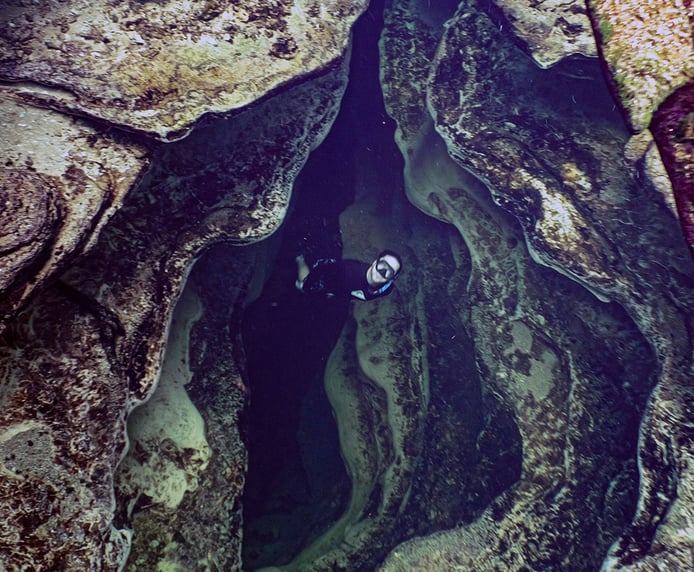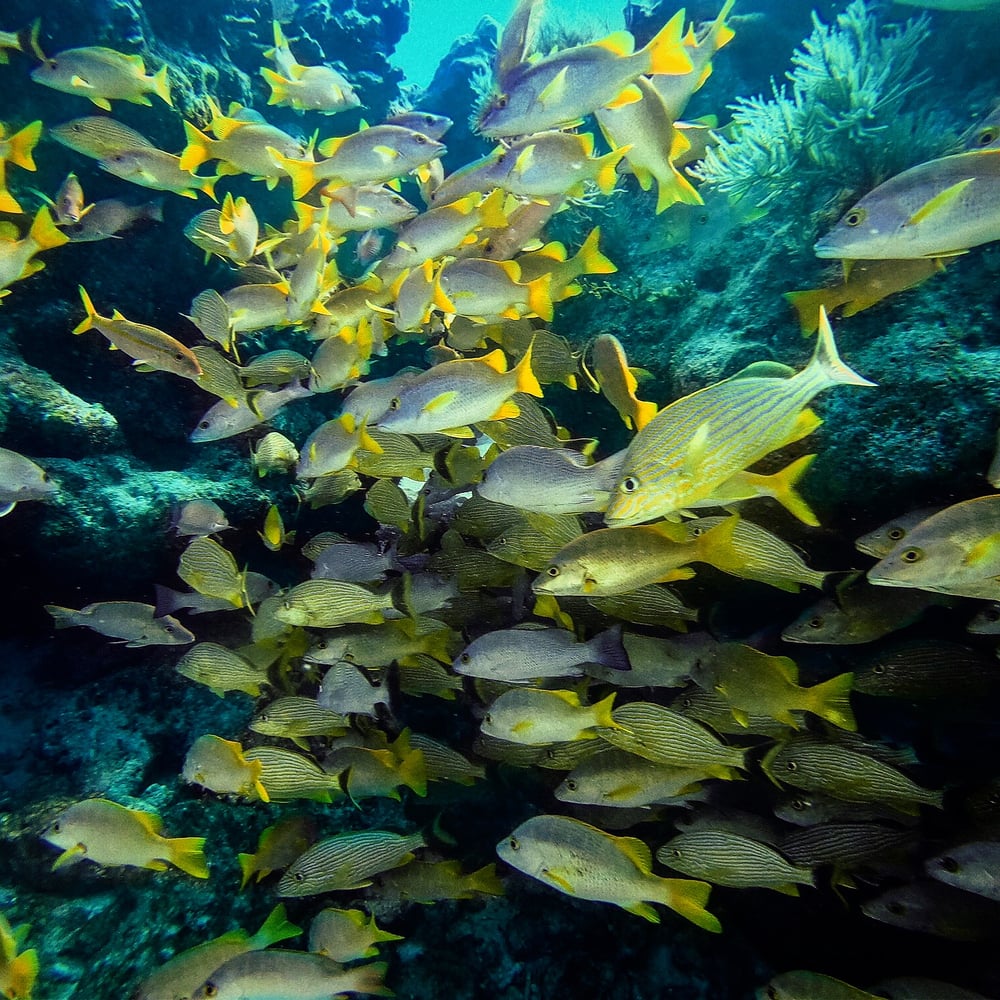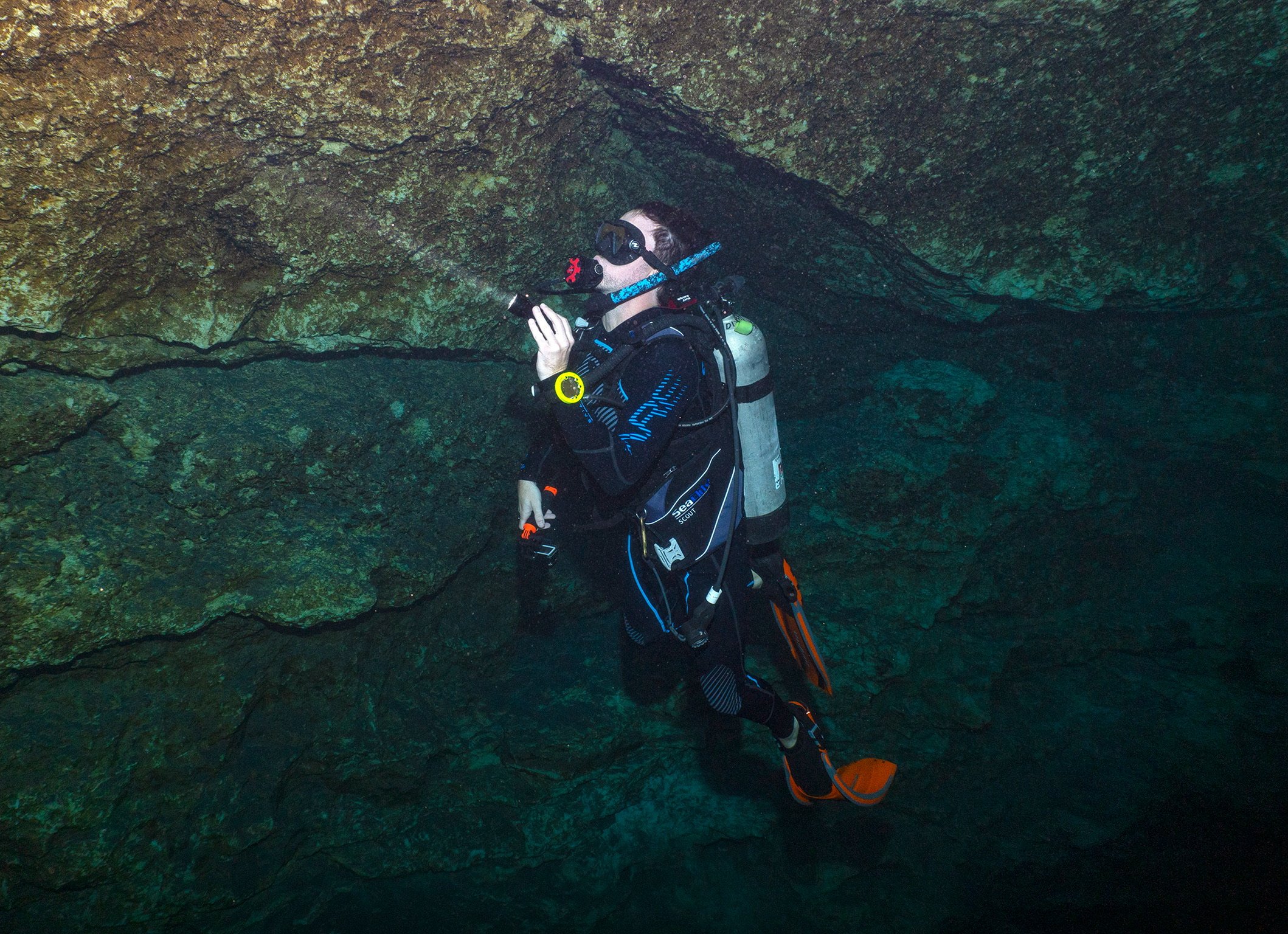David Paulk, Senior Accounting Analyst in Regency's Jacksonville office, combines a passion for scuba diving and freediving Florida's waterways with an ability to capture what he sees underwater via photography. Below the surface is where he spends a lot of time outside the office. He's even helped to start an initiative called Florida Underwater to spread awareness of environmental issues facing Florida's waterways.
 Volusia Blue Spring
Volusia Blue Spring
RC: How long have you been diving?
DP: In August 2015, I got scuba certified. Since then I've logged about 65 dives. I started freediving (diving while holding your breath) about 2 years ago and have been diving at the springs and offshore a couple times each month since then.
RC: Where are your favorite places to dive in Florida — and how often do you go and how long are you underwater?
DP: My favorite place to scuba dive is Molasses Reef in Key Largo. I go there 3-4 times a year. The water is crystal clear and there are thousands of different reef fish to see. The water ranges from 40-80 feet deep and I stay underwater for anywhere from 30 minutes to an hour depending on depth (deeper dives have to be shorter). For those dives you need fins, a mask, scuba gear (air tank, regulator, weights, etc), and a dive computer is very helpful.
 Molasses Reef in Key Largo
Molasses Reef in Key Largo
DP: My favorite place to free dive is Troy Spring near Mayo, FL. The spring is 50 feet in diameter and it goes down to 75 feet deep. It’s one of the largest and deepest springs in Florida, and therefore is a popular training location for freedivers. The water in the springs is always around 72 degrees, so in the winter I wear a wetsuit. I usually do 6 to 10 dives to 40-50 feet of depth for about 2 minutes each and then take a few minutes to recover, so I spend about an hour to an hour and a half in the water on each trip. For those dives all you need is a mask, fins, and sometimes a wetsuit.
 Paulk (second from left) at Molasses Reef in Key Largo
Paulk (second from left) at Molasses Reef in Key Largo
RC: What is Florida Underwater? What is your involvement with it?
DP: It’s an initiative started to support various environmental organizations around the state of Florida. I started it with some friends, and while it is still evolving, it’s currently a social media platform and fledgling website designed to spread awareness of environmental issues facing Florida. We started it as a response to the realization of how rapidly Florida’s waterways are changing for the worse. Freedivers are notoriously secretive about good dive spots, so in the beginning we had to find out through trial and error. We were trying to find new places to explore and dive, so we were constantly researching springs and other bodies of water. We would find old blogs from the 90s that described amazing springs with abundant wildlife, so we would plan a trip. We would then set out at 6 am on a Saturday to drive to a spring that is no longer anything like the description. The water level had dropped, the flow from the spring had decreased, the native plants had been choked out by algae, and the native fish have been forced out by invasive species. These moments are pretty disheartening and in order to prevent the conditions from getting worse, we started Florida Underwater as a way to raise awareness and money for the conservation groups who are protecting the springs and rivers of Florida. Right now we have an Instagram and are developing a website where we discuss statewide environmental issues. We are building an online store where a percentage of all sales will go directly to the organizations who are fighting the good fight.
 Paulk at Paradise Spring near Ocala, FL — about 75 feet below the surface
Paulk at Paradise Spring near Ocala, FL — about 75 feet below the surface
RC: What would you tell someone who’s interested in diving or exploring but hasn’t done it before?
DP: The Florida springs are the highest concentration of freshwater springs on earth. We are lucky to have them, but they are very fragile. Research how to properly enjoy them before you visit. Be prepared to get there really early. If you’re really interested in seeing the wildlife and undisturbed nature, it’s best to go on a weekday or during the winter when the crowds aren’t there.
 Ginnie Springs in Gilcrist County, FL
Ginnie Springs in Gilcrist County, FL